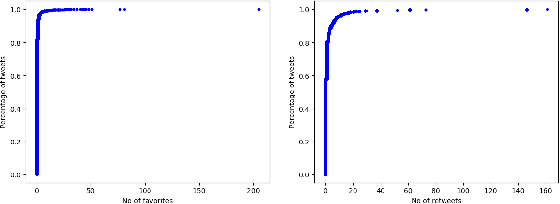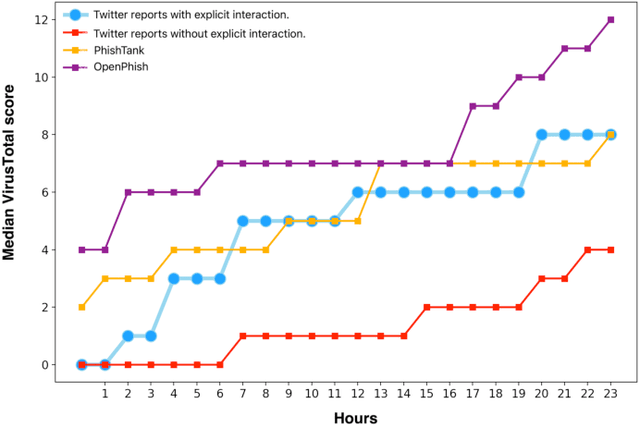Sayak Saha Roy
Utilizing Large Language Models to Optimize the Detection and Explainability of Phishing Websites
Aug 11, 2024



Abstract:In this paper, we introduce PhishLang, an open-source, lightweight Large Language Model (LLM) specifically designed for phishing website detection through contextual analysis of the website. Unlike traditional heuristic or machine learning models that rely on static features and struggle to adapt to new threats and deep learning models that are computationally intensive, our model utilizes the advanced language processing capabilities of LLMs to learn granular features that are characteristic of phishing attacks. Furthermore, PhishLang operates with minimal data preprocessing and offers performance comparable to leading deep learning tools, while being significantly faster and less resource-intensive. Over a 3.5-month testing period, PhishLang successfully identified approximately 26K phishing URLs, many of which were undetected by popular antiphishing blocklists, thus demonstrating its potential to aid current detection measures. We also evaluate PhishLang against several realistic adversarial attacks and develop six patches that make it very robust against such threats. Furthermore, we integrate PhishLang with GPT-3.5 Turbo to create \textit{explainable blocklisting} - warnings that provide users with contextual information about different features that led to a website being marked as phishing. Finally, we have open-sourced the PhishLang framework and developed a Chromium-based browser extension and URL scanner website, which implement explainable warnings for end-users.
From Chatbots to PhishBots? -- Preventing Phishing scams created using ChatGPT, Google Bard and Claude
Oct 29, 2023Abstract:The advanced capabilities of Large Language Models (LLMs) have made them invaluable across various applications, from conversational agents and content creation to data analysis, research, and innovation. However, their effectiveness and accessibility also render them susceptible to abuse for generating malicious content, including phishing attacks. This study explores the potential of using four popular commercially available LLMs - ChatGPT (GPT 3.5 Turbo), GPT 4, Claude and Bard to generate functional phishing attacks using a series of malicious prompts. We discover that these LLMs can generate both phishing emails and websites that can convincingly imitate well-known brands, and also deploy a range of evasive tactics for the latter to elude detection mechanisms employed by anti-phishing systems. Notably, these attacks can be generated using unmodified, or "vanilla," versions of these LLMs, without requiring any prior adversarial exploits such as jailbreaking. As a countermeasure, we build a BERT based automated detection tool that can be used for the early detection of malicious prompts to prevent LLMs from generating phishing content attaining an accuracy of 97\% for phishing website prompts, and 94\% for phishing email prompts.
Generating Phishing Attacks using ChatGPT
May 09, 2023Abstract:The ability of ChatGPT to generate human-like responses and understand context has made it a popular tool for conversational agents, content creation, data analysis, and research and innovation. However, its effectiveness and ease of accessibility makes it a prime target for generating malicious content, such as phishing attacks, that can put users at risk. In this work, we identify several malicious prompts that can be provided to ChatGPT to generate functional phishing websites. Through an iterative approach, we find that these phishing websites can be made to imitate popular brands and emulate several evasive tactics that have been known to avoid detection by anti-phishing entities. These attacks can be generated using vanilla ChatGPT without the need of any prior adversarial exploits (jailbreaking).
Evaluating the effectiveness of Phishing Reports on Twitter
Nov 13, 2021



Abstract:Phishing attacks are an increasingly potent web-based threat, with nearly 1.5 million websites created on a monthly basis. In this work, we present the first study towards identifying such attacks through phishing reports shared by users on Twitter. We evaluated over 16.4k such reports posted by 701 Twitter accounts between June to August 2021, which contained 11.1k unique URLs, and analyzed their effectiveness using various quantitative and qualitative measures. Our findings indicate that not only do these users share a high volume of legitimate phishing URLs, but these reports contain more information regarding the phishing websites (which can expedite the process of identifying and removing these threats), when compared to two popular open-source phishing feeds: PhishTank and OpenPhish. We also notice that the reported websites had very little overlap with the URLs existing in the other feeds, and also remained active for longer periods of time. But despite having these attributes, we found that these reports have very low interaction from other Twitter users, especially from the domains and organizations targeted by the reported URLs. Moreover, nearly 31% of these URLs were still active even after a week of them being reported, with 27% of them being detected by very few anti-phishing tools, suggesting that a large majority of these reports remain undiscovered, despite the majority of the follower base of these accounts being security focused users. Thus, this work highlights the effectiveness of the reports, and the benefits of using them as an open source knowledge base for identifying new phishing websites.
 Add to Chrome
Add to Chrome Add to Firefox
Add to Firefox Add to Edge
Add to Edge